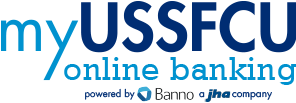Three Steps to Prep for Paying for College
By: Adebukola Dada & Kristen Evans
Published: April 3, 2019

Over the next few months, a new group of students will begin exploring options to help pay for college. For many people, how to pay for a college education is one of the first major financial decisions they’ll make.
There are many different ways to pay for college. Understanding your choices can help you make the right decision for your situation.
Search for scholarships and grants.
Grants and scholarships are types of financial aid that often don’t have to be repaid. Grants are generally need-based, while scholarships are usually merit-based. You can use one of the many free scholarship search options available to look for scholarships and state and local grants . Do your research and apply by the deadlines.
If you decide to borrow to cover the cost of your education, apply for federal student loans.
If you’re considering taking out student loans to help pay for school, look into federal student loans. For many borrowers, federal student loans can be a better option because interest rates will generally be fixed. This means your interest rate won’t change over the life of the loan. Also, in some cases, the interest on your loan is paid by the federal government while you're in school.
In order to be eligible for a federal student loan you must complete the Free Application for Federal Student Aid (FAFSA) form.
Here are three steps to help guide you through the federal financial aid process.
- Do your homework before borrowing with student loans.
Before you start your FAFSA form it’s good to have an idea of how much you will pay for your higher education and how much you need to borrow. Compare the cost of different schools with our Paying for College tool. Be sure to take advantage of any scholarships and grants before applying for a federal loan.
- Have your information ready and available before you start.
Having basic information readily available before beginning the process will help you navigate through the FAFSA form. Some key pieces of information you should have are:
- Basic information about you (Social Security number, date of birth)
- Details about the schools you are interested in (school name, city and state, etc.)
- Previous year's tax return, if you filed one
If you are a dependent student , you will need your parents’ basic information and tax returns as well.
- Know your deadlines.
Complete the FAFSA form as soon as you can. Funds are typically awarded on a first-come first-served basis for each school year. Check deadlines for your state, college and federal applications.
Once you complete the steps above, you’re ready to submit your FAFSA form. If you’re looking for more information about paying for college the CFPB has resources that can help.




